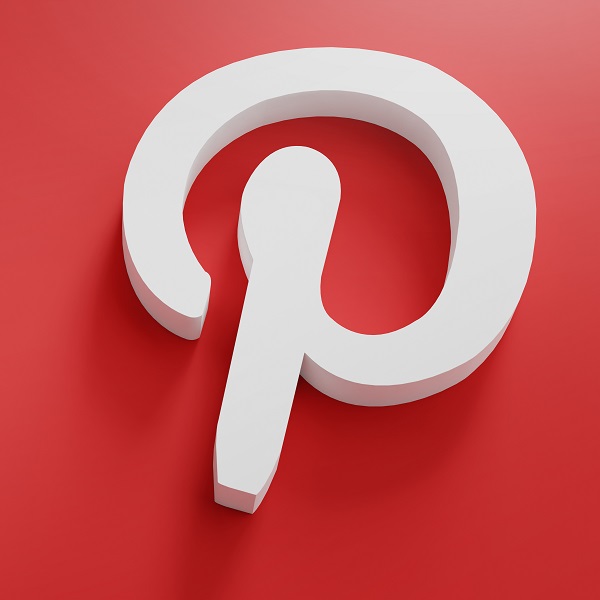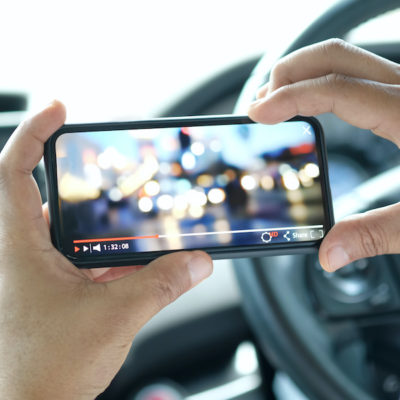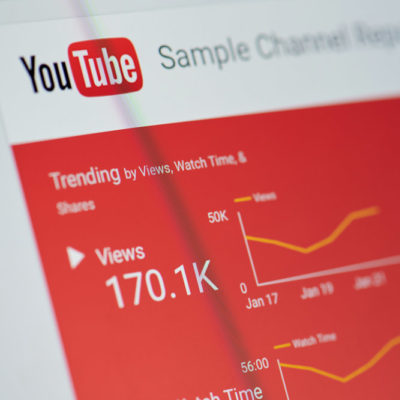This article was originally posted on March 13th, 2017, and was last updated September 2021.
Can Pinterest provide value to a business’s SEO marketing strategy? The short answer is absolutely, if you use it right. This is the same Pinterest that many people use to find great recipes, cute decorating ideas, and crafts. You may find this hard to believe, but Pinterest can indeed be a useful resource to promote your business online.
Is Pinterest Good For SEO?
Pinterest can be a powerful tool to promote your business for several reasons. First, Pinterest attracts a large amount of internet traffic. Pinterest was the fastest site in history to reach 10 million unique monthly visitors and high user engagement metrics. With 454 million active users, Pinterest from 2016 to 2021 has maintained users and remained popular. They do this with their simple, visually appealing content.
Another big reason to use Pinterest is its high conversion rate. In other words, compared to users on other websites, people who use Pinterest are more likely to go out and buy something they saw on Pinterest. The website boasts a 50% higher conversion rate than other social networks. In addition to the high conversion rate, Pinterest users typically spend more money on those purchases than users on other social media websites.
Finally, Pinterest makes a great addition to an SEO strategy because it allows business owners to specifically target products. With Facebook, Instagram, and Twitter, users follow brands and people, but Pinterest allows its users to follow the products they are most interested in. Instead of receiving irrelevant or uninteresting Facebook posts and tweets because they followed a business, users pin and return to the items they want to make or buy.
Pinterest and SEO Working Together
Social media can help SEO, and Pinterest is no different. When you’re a Pinterest user, you can save or “pin” any image you find online or add to your account. You create different boards and categorize collections with the topics and collections you’re interested in. Most images, when they are pinned, are linked to the original websites they’re from. That’s why Pinterest and SEO can both benefit one another.
There are four main factors that influence Pinterest SEO. Those factors are domain quality, pin quality, pinner quality, and topic relevance. Pinterest determines pin quality by the freshness of the content, the popularity of the saved pins, and the amount of engagement it receives from users. For example, if someone else shares a pin from your board onto theirs, Pinterest will measure the engagement from every instance of the pin. Improving and optimizing pin quality is important when it comes to Pinterest and SEO.
How to Optimize Pinterest Pins
Not only does Pinterest offer small businesses the benefits listed above, but it’s also very easy to use. Do not, however, let that fact lull you into false confidence or hasty/lazy pinning practices. Your business can start with these suggestions to get more traffic out of your Pinterest account. Let’s look into the following tips to help you know how to use SEO on pinterest:
1) Establish a Pinterest Business Profile
A business Pinterest account is completely free. It also gives you access to Pinterest analytics to help gain valuable insights into user behavior. It also enables you to use Rich Pins and other additional Pinterest features. Following Pinterest’s steps on how to set up a business profile is easy to follow and do.
Claim your Business Website on Pinterest
Once you’ve established your business profile, the next step is to claim your business on Pinterest. This let’s Pinterest know that the business you claim to use is actually your own. This step consists of verifying that you own a specific domain, and it requires you to add a link of code to your website. Just follow these instructions for claiming your website on Pinterest and you’ll have access to all the perks that come with a business account.
Describe Your Company
With the limit of 500 characters, you will need to describe what your business does and the value you can bring to users. Write something that helps capture people’s attention and helps paint a picture of what your business is about. You can look at other businesses within your industry to help draw ideas on what you would like to say, but be sure to add your own spin to it.
2) Carefully Choose Your Username
Make sure your username is straightforward and relates closely to your business. If your whole company name fits, then it’s probably best to use it. If your business name does not fit, be strategic about the username you choose. Keep it relevant, keep it keyword-conscious, and make it easy to remember and spell. Also make it as close to your business name as possible for users to easily find you if they’re specifically looking for you. The username is limited to 15 characters, so use those characters wisely.
3) Optimize Your Profile
Many search engines will crawl more than just your content; they will crawl basic information in your profile as well. Search engines see your username, which is just one more reason to select the most relevant name that you can. They could also look into sections such as “About”, where you have a chance to let pinners know who you are and what you do. Just like we discussed in describing your company, you’re not only letting your users know who you are but also search engines as well. Using target keywords in this section is beneficial for optimization as well.
When it comes to optimizing the images you use, be sure to add a detailed meta description for ADA compliance and to help search engines understand your images. Overall, it’s extremely important to optimize all of your content you create for your website, Pinterest profile, and pins you create and share.
4) Use High-Quality Images
Pinterest is a visual social media platform, so you are going to need high-quality pictures. Do not post any low-resolution pictures, and adjust the size of your images so they fit in the Pinterest platform. While Pinterest does not have any restrictions on image height, it does restrict the width to 554 pixels, so format your pictures accordingly.
Choose more descriptive image file names
When you post pictures, make sure you optimize them. Search engines crawl the text associated with pictures, so don’t leave your picture with an auto-generated file name. Choose a descriptive and keyword-rich file name for your image.
Include detailed image descriptions
You are limited to 500 characters in your image description, so use that space well. Use keyword-rich descriptions, but do not add in so many keywords that the content sounds spammy. Also, try to keep your descriptions between 200 and 300 words. Although you do have up to 500 available characters, a recent study found that the most re-pinned and commented-on items had descriptions ranging from 200 to 310 words.
Image Sizing
Pinterest is mainly popular on mobile devices because it’s easier to scroll and pin things in the palm of your hand. When it comes to sizing your Pinterest images, it can be hard to know what images are the best and what will attract users to pinning your posts. For Pinterest specifically, the longer the image the better. With a 2:3 ratio being ideal on newsfeeds, an optimal pin size of 1,000 pixels by 1,500 pixels is the best to use. As long as the images aren’t too big, bigger images are better than smaller.
5) Utilizing Other Forms of Content
While Pinterest is very visual with using a variety of images, sometimes it isn’t just about using pretty pictures. Now that there are a variety of different content types you can use, why not use them to your benefit! You could incorporate blogs, videos, infographics, e-books, and products within your Pinterest strategy. When you’re able to incorporate these elements into your visual imagery, the more opportunities your users have to interact with the content on your Pinterest business profile.
Pinterest only allows you to re-pin the same post 4 times each month. However, you can link to the same piece of content as many times as you’d like, assuming you use different visuals. Your audience wants to see different pins, but not the same blog post 100 times with different images. While Pinterest has no penalty for having multiple pins to the same link, it’s probably recommended creating 3-6 unique pins for each piece of content. That way there’s a better balance to accommodate both users and Pinterest’s optimization.
6) Pin Your Own Content
With Pinterest, you do not need to post a link to your website along with each image. If you use the Pin It button, your pin will automatically include a link back to your website when you post a picture. Furthermore, once you create that link, other Pinterest users will create other backlinks when they share or re-pin your content. So it’s important to pin your own content instead of just re-pinning other people’s content. Not only will you reinforce your image and increase brand recognition, but the pin will provide a direct link to your website for purchasing your products.
7) Look at SERPs
You can also search online for other pointers as you begin to use Pinterest to your advantage.
SEO is all about finding what people search for, and helping them answer their questions or requests. If you find yourself stumped with what topic you should add next, conduct a basic search for related terms that correlate with your business. You can see popular search ideas of what your users look for within your industry. While this doesn’t give you quantitative information on whether or not those keywords will rank higher than others, it can give you a good start and direction on topics to expand on. These are free insights your marketing and SEO strategies can benefit from.
8) Keyword Research
Keyword research in SEO is a very large aspect that can dive into many different sectors. However simply put, while Pinterest searches have their own algorithm, practicing keyword research within your content should always be considered. Google searches deliver traffic to Pinterest, so when you include a good keyword strategy, you might draw in some external traffic if you provide excellent content. With Pinterest articles, it might be better to focus your efforts on long tail keywords that have higher search volume and can be less competitive. Overall it’s all about managing a balance that will deliver quality traffic to your Pinterest page (and ultimately to your website).
9) Use Hashtags
Using hashtags is a popular trend on Pinterest. Hashtags help individuals find more posts or pins related to their topic of interest. You can create hashtags that relate to your content, business, or niche! While having hashtags helps your pins reach out to more people, having too many can be overbearing. Be sure to have the right amount of hashtags, maye 5-8 at the most, to help improve your pins. Another good idea is adding keywords into your hashtags. This helps to optimize and add Pinterest value to your pins and makes the hashtags more direct.
10) Implementing a “Save” Button to Your Pins
When users are able to “Save” pins to their boards, this helps improve the optimization of your content to your website. It helps drive traffic to your Pinterest page, gain more followers, and increase exposure to images and content on your profile. You can implement the “Save” button through HTML. You can either make the “Save” button appear by default, or you can make it appear when a user hovers over the top-left quadrant of the picture. If you get a lot of traffic from Pinterest, or your customers show great interest in saving your images to their Pinterest boards, it might make sense to feature and add the “Save” button.
Adding Value to Pinterest
Pinterest is not just a place to find great craft and clothing ideas. Pinterest has grown to become one of the most relevant social networks, and when used correctly, it can definitely benefit your business. Look forward to more traffic and higher conversion rates when you invest and optimize in Pinterest.
At Boostability, our affordable SEO services for small businesses are here to supplement your social media efforts. Every five minutes we help a small business reach the first page of a Google search. So let’s team up to help your small business grow! Contact us today with any questions or if you would like to speak with one of our digital marketing experts.










